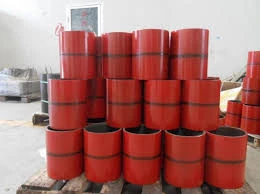- Afrikaans
- Albanian
- Amharic
- Arabic
- Armenian
- Azerbaijani
- Basque
- Belarusian
- Bengali
- Bosnian
- Bulgarian
- Catalan
- Cebuano
- Corsican
- Croatian
- Czech
- Danish
- Dutch
- English
- Esperanto
- Estonian
- Finnish
- French
- Frisian
- Galician
- Georgian
- German
- Greek
- Gujarati
- Haitian Creole
- hausa
- hawaiian
- Hebrew
- Hindi
- Miao
- Hungarian
- Icelandic
- igbo
- Indonesian
- irish
- Italian
- Japanese
- Javanese
- Kannada
- kazakh
- Khmer
- Rwandese
- Korean
- Kurdish
- Kyrgyz
- Lao
- Latin
- Latvian
- Lithuanian
- Luxembourgish
- Macedonian
- Malgashi
- Malay
- Malayalam
- Maltese
- Maori
- Marathi
- Mongolian
- Myanmar
- Nepali
- Norwegian
- Norwegian
- Occitan
- Pashto
- Persian
- Polish
- Portuguese
- Punjabi
- Romanian
- Russian
- Samoan
- Scottish Gaelic
- Serbian
- Sesotho
- Shona
- Sindhi
- Sinhala
- Slovak
- Slovenian
- Somali
- Spanish
- Sundanese
- Swahili
- Swedish
- Tagalog
- Tajik
- Tamil
- Tatar
- Telugu
- Thai
- Turkish
- Turkmen
- Ukrainian
- Urdu
- Uighur
- Uzbek
- Vietnamese
- Welsh
- Bantu
- Yiddish
- Yoruba
- Zulu
Understanding Bull Plug Size Specifications and Their Applications in Various Industries
Understanding Bull Plug Dimensions A Comprehensive Guide
Bull plugs are essential components in various industrial applications, primarily used in piping systems to seal off ends or sections of pipes. Their design and dimensions play a crucial role in ensuring safety and efficiency within systems that handle liquids and gases under pressure. This article aims to provide a detailed understanding of bull plug dimensions, including their significance, standard sizes, and factors influencing their selection.
What is a Bull Plug?
A bull plug is a type of threaded plug that is used to close the end of a pipe or a fitting. Unlike regular plugs, bull plugs often have a larger diameter and a short, robust design, which allows them to withstand high pressure and provide a secure seal. They are commonly made of materials such as stainless steel, carbon steel, or plastic, depending on the application requirements.
Importance of Dimensions
The dimensions of a bull plug are critical for several reasons
1. Compatibility The bull plug must fit the specific pipe size and type to ensure a leak-tight seal. Incorrect dimensions can lead to malfunctions, leaks, and potentially hazardous situations.
2. Pressure Rating The size and shape of the bull plug also determine its pressure rating. A well-engineered plug designed to fit precisely will be capable of maintaining integrity under high pressure.
Standard Dimensions
bull plug dimensions

Bull plugs come in various standard dimensions, typically defined by the pipe schedule and size. Commonly, they are categorized by their nominal pipe size (NPS) and corresponding outside diameter (OD). Here are some of the standard dimensions
- 1/2 inch NPS The bull plug will typically have an OD of about 0.84 inches. - 1 inch NPS The OD will be approximately 1.315 inches. - 2 inch NPS The plug diameter increases to around 2.375 inches. These values may vary slightly depending on the manufacturing standards (such as ASTM, ANSI, or ISO) being followed; hence, always verify against industry standards.
Factors Influencing Dimension Selection
When selecting a bull plug, several factors come into play
1. Pipe Material Different materials may require plugs of specific compositions or coatings to prevent corrosion or chemical reactions.
2. Application Environment The environmental conditions—such as temperature, pressure, and the nature of the fluid being contained—can dictate the choice of dimensions and materials for bull plugs.
3. Customization In some cases, custom dimensions are necessary for specialized applications. This can include non-standard sizes or features like extended lengths or additional threads.
4. Standards Compliance Ensure that the selected dimensions comply with local and international standards relevant to the industry to guarantee safety and reliability.
Conclusion
Understanding bull plug dimensions is crucial for professionals working in industrial sectors involving piping systems. Proper selection not only affects the operational efficiency of the system but also ensures safety and regulatory compliance. When selecting a bull plug, always consider the compatibility with the existing piping, the application requirements, and the relevant standards to make an informed decision. By addressing these considerations, you can effectively prevent issues associated with leakage and pressure loss in piping systems.
-
Tubing coupling plays a significant role in the chemical industryNewsApr.03,2025
-
The Importance of Tubing Crossover in Various Industrial FieldsNewsApr.03,2025
-
The characteristics and important role of Tubing Pup JointNewsApr.03,2025
-
Characteristics and functions of Pup jointNewsApr.03,2025
-
Characteristics and Functions of Pup Joint PipeNewsApr.03,2025
-
Application of Coupling Casing in Various ScenariosNewsApr.03,2025







